Egyptian Geese - Alopochen aegyptiaca
(Phylum) Chordata → (Class) Aves → (Order) Anseriformes → (Family) Anatidae → (Genus) Alopochen
(Phylum) Chordata → (Class) Aves → (Order) Anseriformes → (Family) Anatidae → (Genus) Alopochen
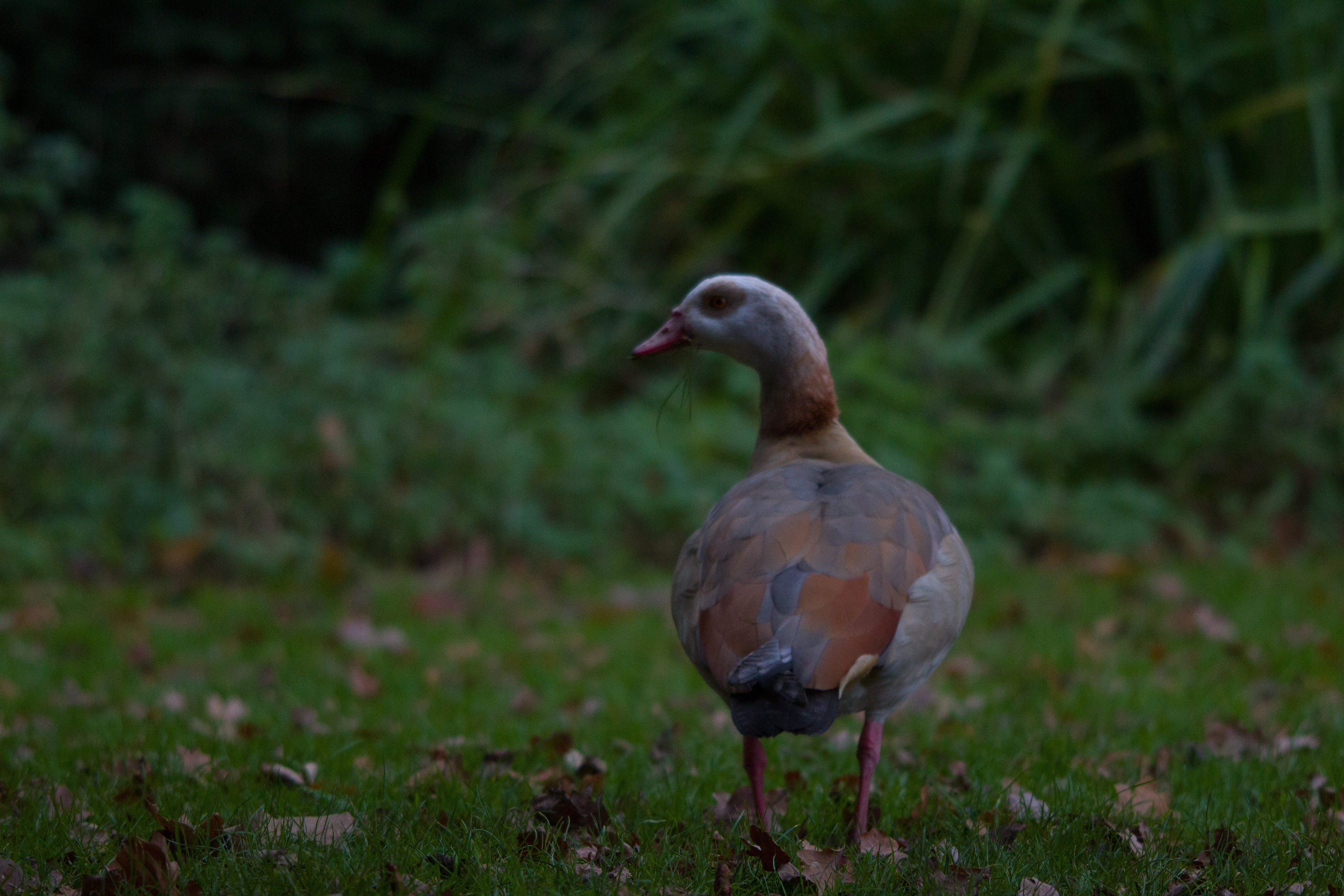
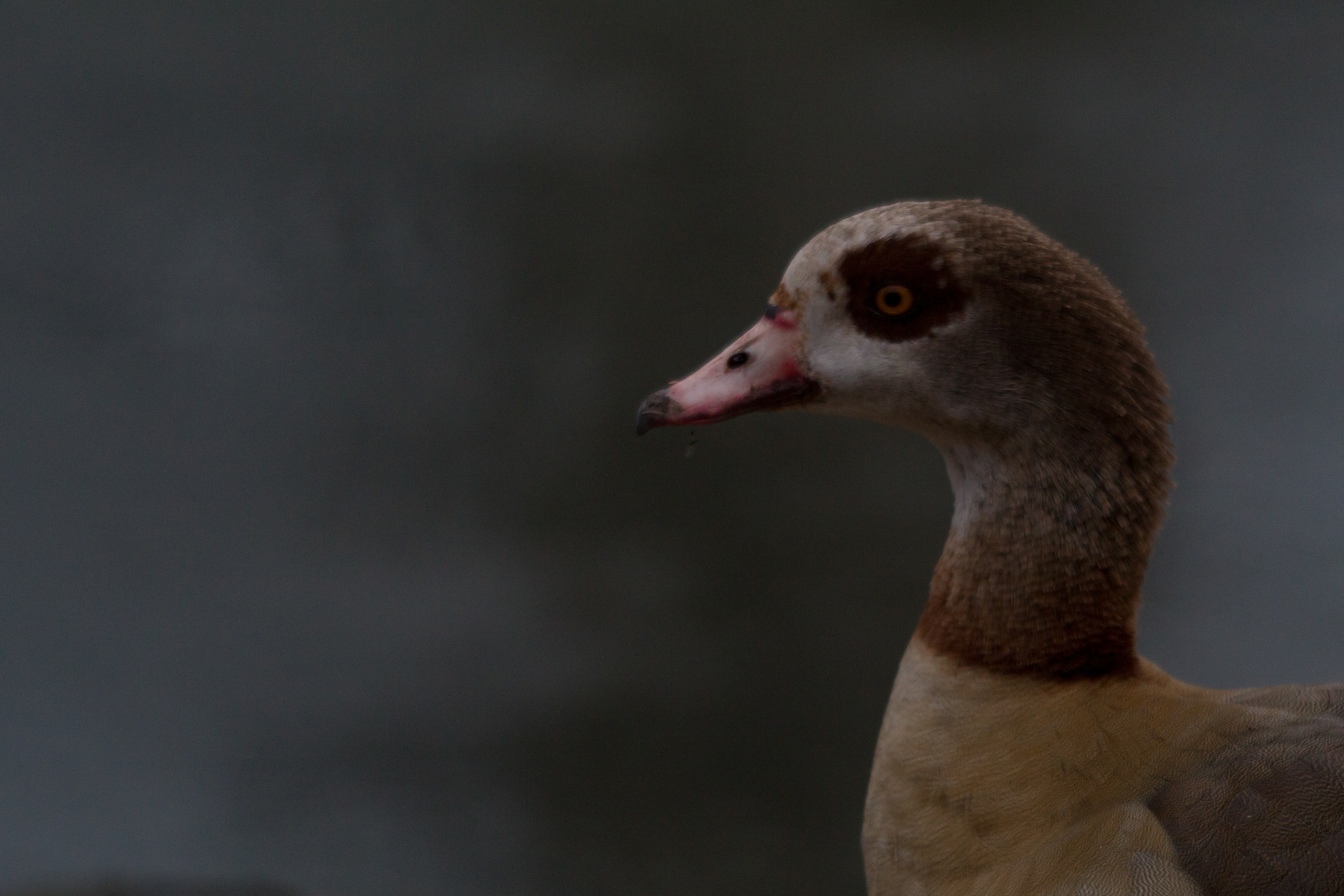
Egyptian Geese on campus can often be found feeding on the grass alongside the lake. They play an important role in the ecosystem and help to disperse seeds and break up dead plants and soil. These birds mate for life and couples can be found nesting in vegetation, holes or simply on the ground.
These birds have distinct colouration and are easy to identify thanks to their distinctive brown patches over their eyes. These patches are often surrounded by a white/light-coloured face to add to the definition of this feature, if you are unsure these birds also have a brown patch in the middle of their chest which sets them apart from their closest relatives. The colours in the feathers of these birds are vibrant, with orange and green hues. Females of this species tend to be slightly smaller than the males and both have a calm temperament. The geese on campus are friendly and used to people therefore can usually be found along the paths and don't take much searching for, however, so as not to cause stress to the birds I would recommend admiring from a distance and using a telephoto lens to capture these geese.
Interestingly Egyptian Geese are not actually geese, they are more accurately shelducks, meaning they are a cross between a goose and a duck.
The Egyptian Goose, as the name suggests, is native to Egypt and at one point was worshipped in the country, often appearing in their artwork. The Egyptian goose was introduced to the UK in the 18th century.
Glistening Ink Cap Mushroom - Coprinellus micaceus
(Phylum) Basidiomycetes → (Class) Agaricomycetes→ (Order) Agaricales → (Family) Psathyrellaceae → (Genus) Coprinellus
(Phylum) Basidiomycetes → (Class) Agaricomycetes→ (Order) Agaricales → (Family) Psathyrellaceae → (Genus) Coprinellus
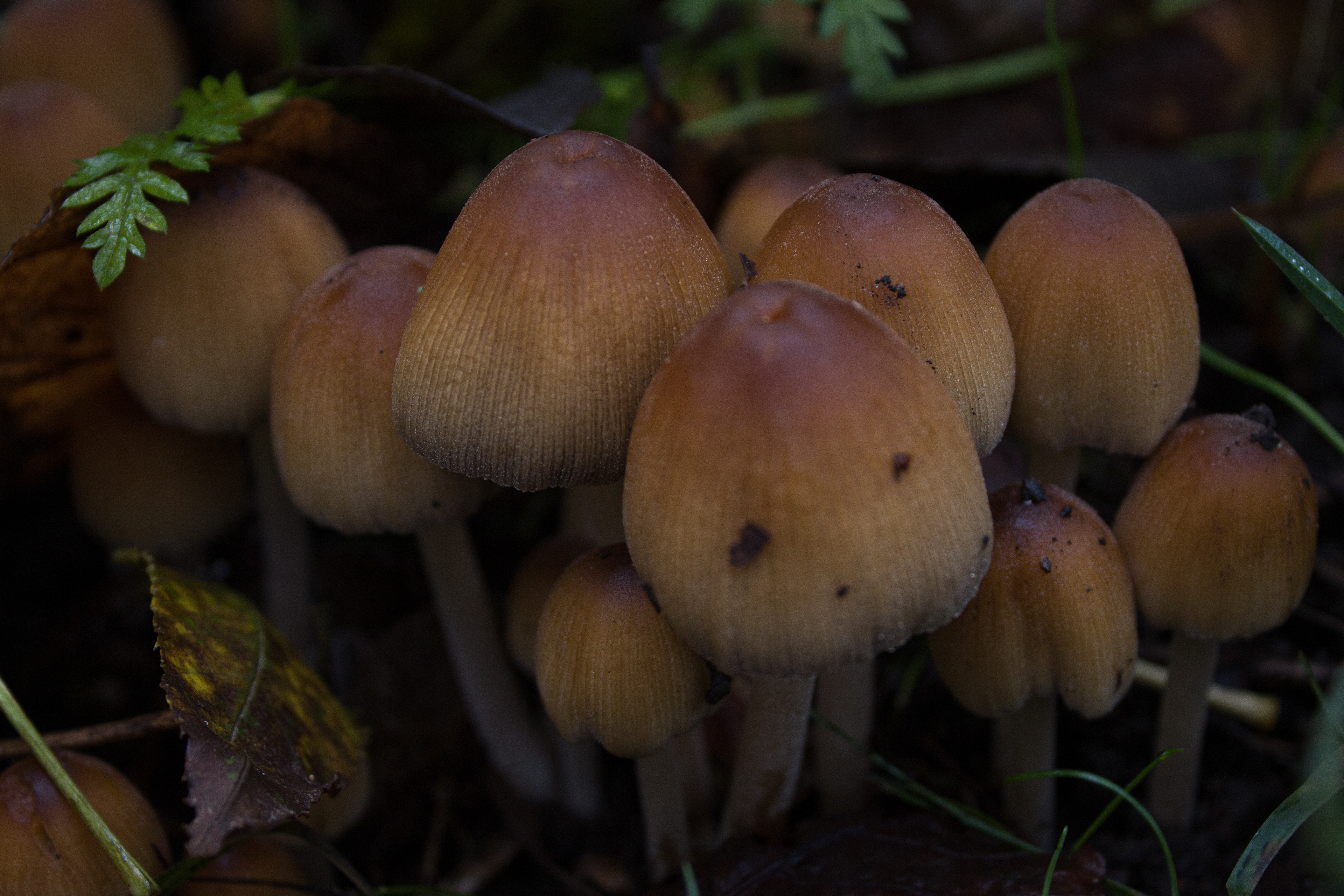
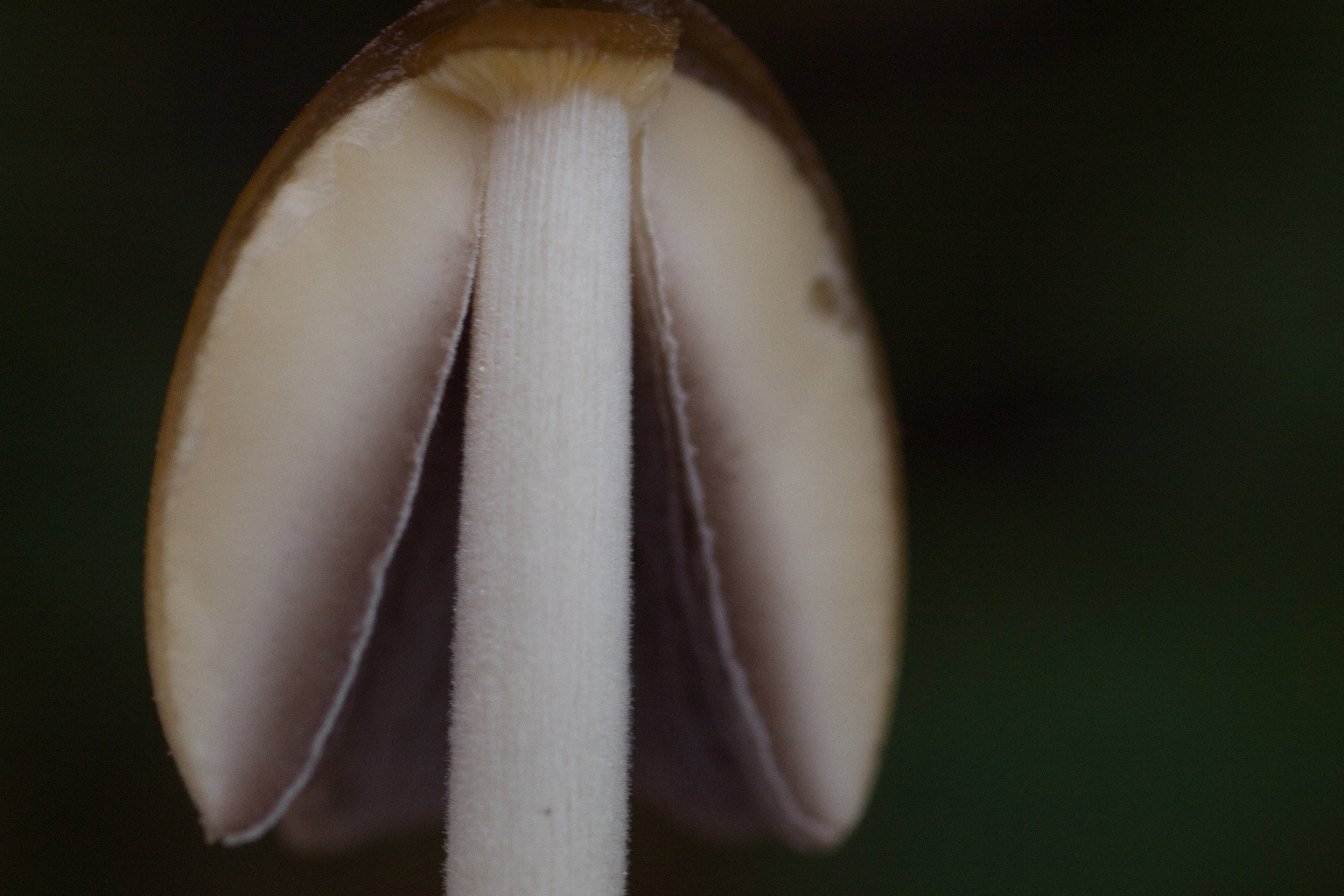
The glistening ink cap has an orange/brown cap that grows darker as it reaches the top of the mushroom, its orange colouration sets it apart from other ink caps. The gills of these mushrooms are primarily white and then lead to a small amount of brown visible from underneath the mushroom. The flesh is thin and as these mushrooms mature they will open up and begin to peel into a cup shape, and thick black ink will form. The beginning of this transformation is visible across the bottom of the caps in the first image, where you can see the darkening of the cap.
To find these mushrooms look for dead wood and old tree stumps. They tend to grow in clusters and can be easily spotted when foraging. You may need to be careful of similar mushrooms such as the woodland inkcap, the glistening ink cap has tiny mica crystals ‘glistening’ on the cap, hence the name. However, this mica powder may wash off when exposed to rain. Woodland inkcaps tend to grow in larger clusters. Most of these mushrooms will be easy to find and access, however they are often obscured by nearby plants, if collecting these then gloves may be required to avoid nearby brambles or stinging plants.
The ink from these mushrooms, as well as other ink cap variations, used to be used to write and draw. If collected and fermented correctly the ink can still be used.
Mica powder gives these mushrooms their glisten, but this mineral is also used to add colour and shimmer to paints, resin, soaps, and other shiny items.
Glossy Abelia - Abelia x Grandiflora
(Phylum) Tracheophyta→ (Class) Magnoliopsida → (Order) Dipsacales → (Family) Linnaeaceae → (Genus) Abelia R. Br
(Phylum) Tracheophyta→ (Class) Magnoliopsida → (Order) Dipsacales → (Family) Linnaeaceae → (Genus) Abelia R. Br
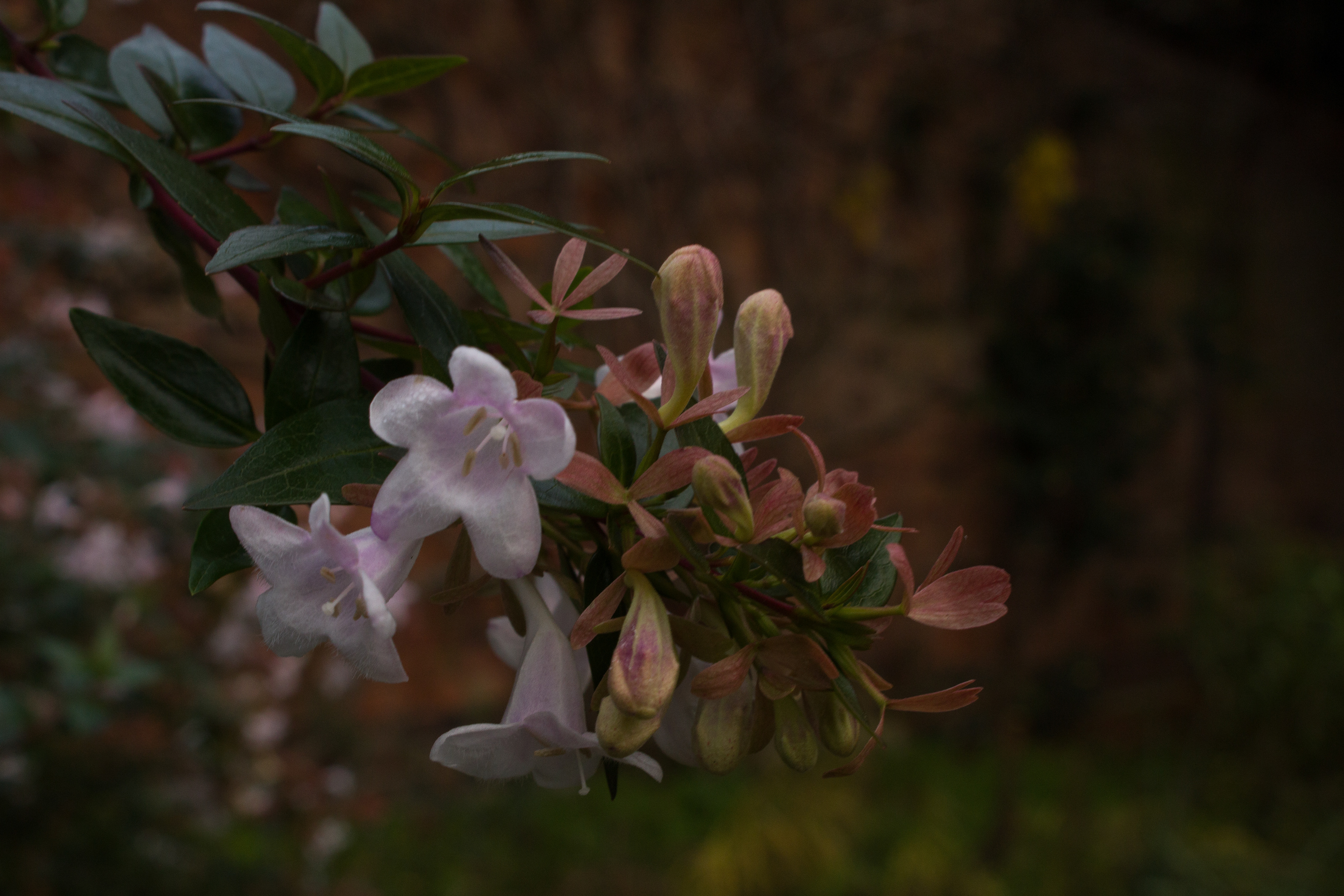
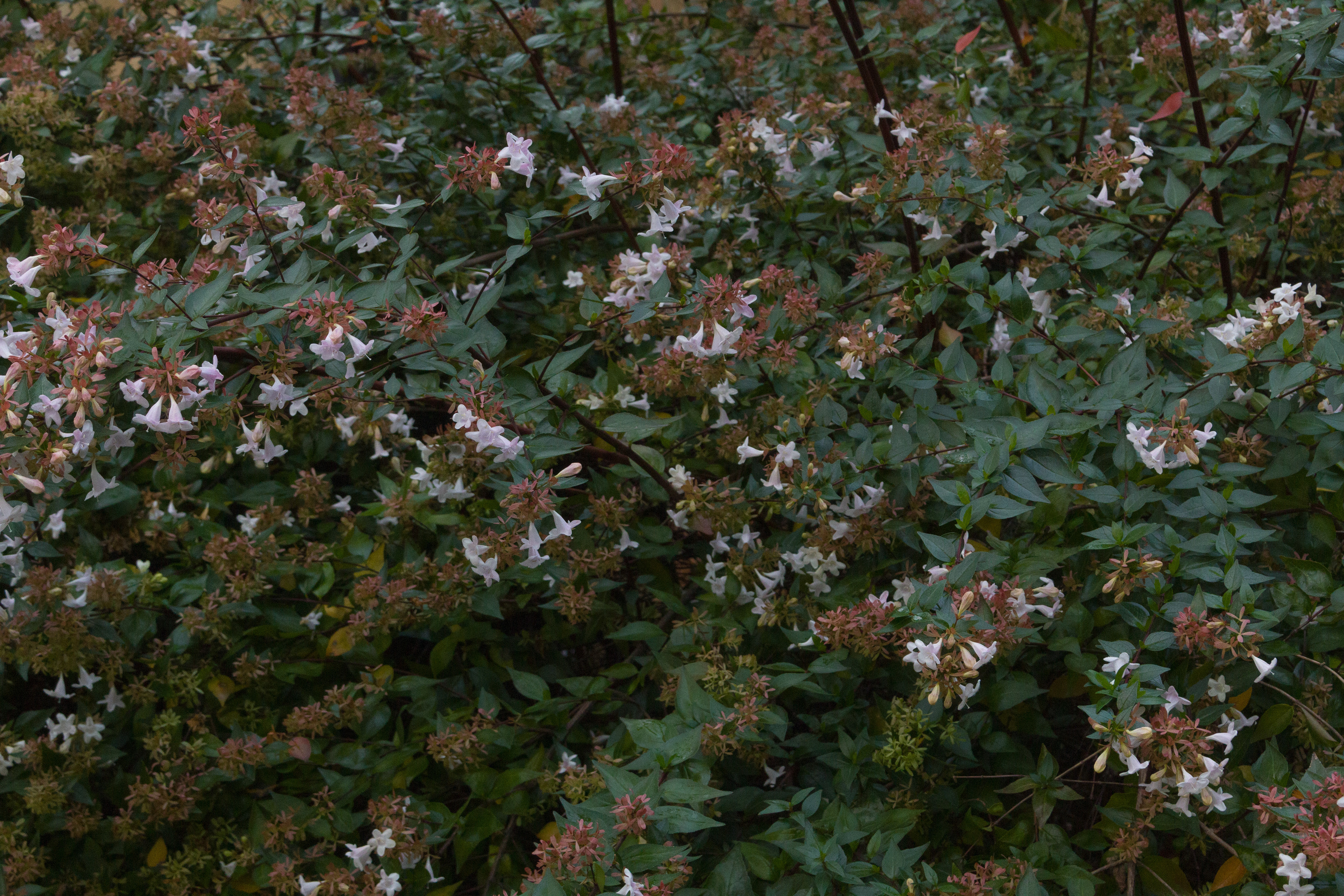
Abelia Grandifloras can be found in Highfields Walled Garden on the University Park Campus. These beautiful, pale, pink flowers amongst the green shrubbery make for a stunning addition to the garden. Gardens such as this allow for a range of non-native plants to be introduced to the campus. This added biodiversity creates better availability of food and resources to other organisms living on campus, and these plants in particular are loved by pollinators. These plants are easy to spot and are usually planted with intention i.e. in courtyards or gardens, due to their low maintenance, therefore no specialist equipment would be required to find these plants.
These plants are somewhat difficult to identify due to having so many close relatives. The arching branches make for a beautiful shrub, holding their leaves year-round. The flowers blossom in summer and remain prominent on the plant through autumn. The leaves form oval shapes and have a waxy coat that gives a glossy appearance.
Abelias are native to Japan and the Himalayas, they were introduced to the UK in 1844 by Robert Fortune and since have become incredibly popular due to their easy-to-manage nature and ability to survive throughout the British seasons.
The Abelia family is award-winning with the Abelia 'Edward Goucher' flower receiving the RHS Award of Garden Merit (AGM).
Alder Leaf Beetle - Agelastica alni
(Phylum) Arthropoda→ (Class) Insecta→ (Order) Coleoptera→ (Family) Chrysomelidae→ (Genus) Agelastica.
(Phylum) Arthropoda→ (Class) Insecta→ (Order) Coleoptera→ (Family) Chrysomelidae→ (Genus) Agelastica.
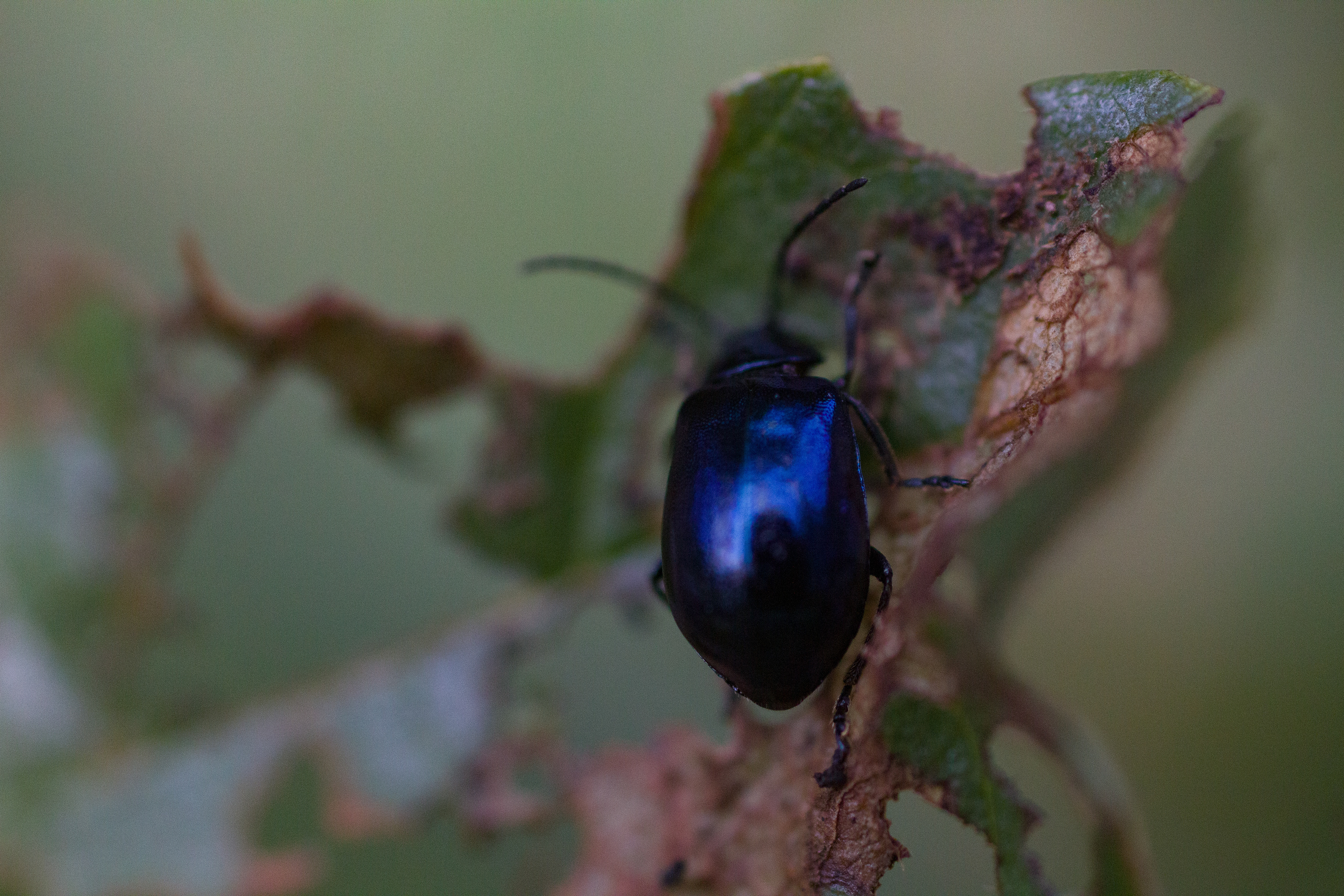
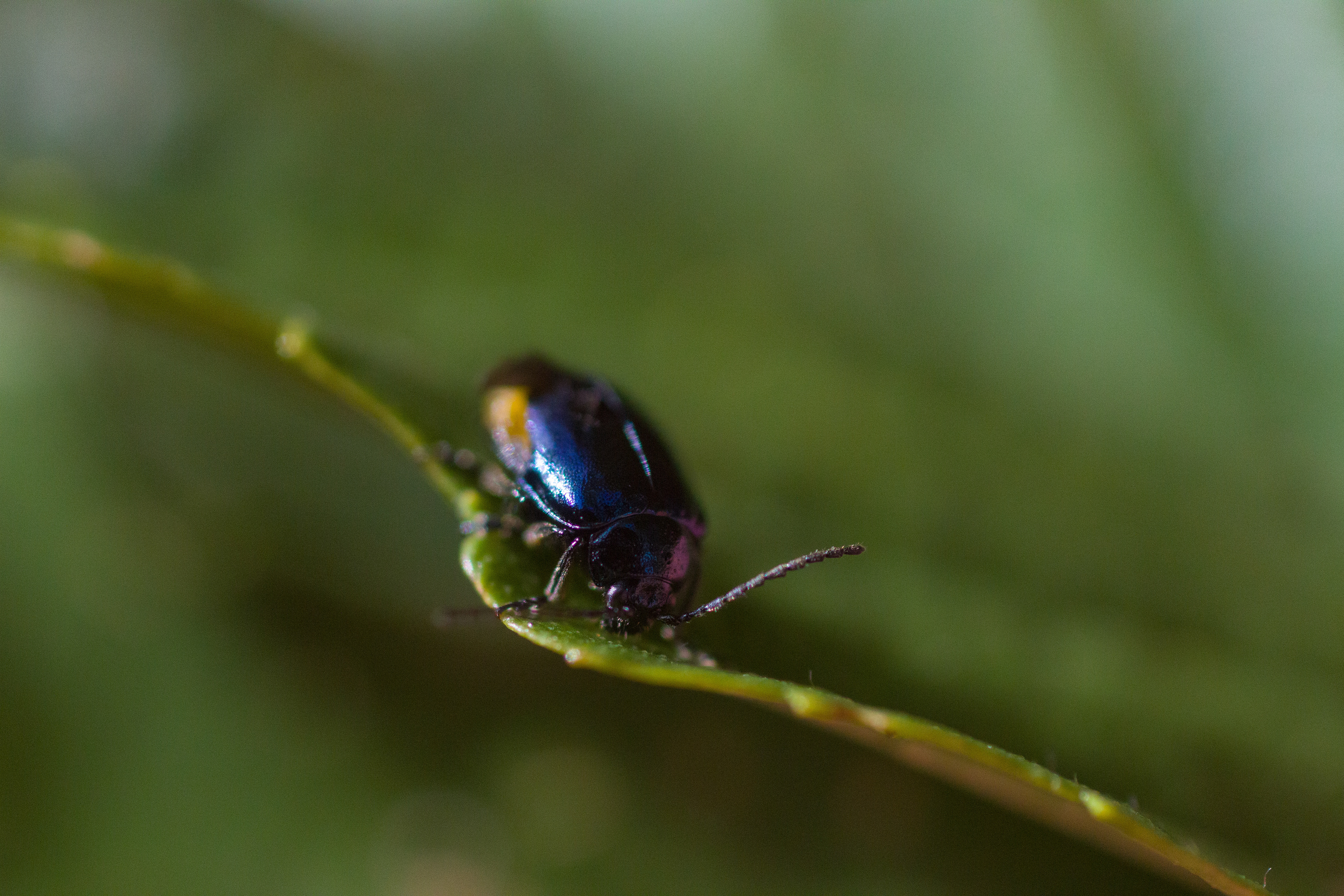
The metallic blue coat of these beetles makes them easy to spot if you are looking for them thanks to the sharp contrast between the shells and the leaves these beetles spend their time resting and eating on. The beetles are an average of 7mm in length so whilst they wouldn't require any specialist equipment to see a macro lens would be recommended for photography. As the name suggests, these beetles can often be found on Alder (Alnus cordata) leaves, however also consume Birch (Betula pendula) and Goat Sallow (Salix caprea).
These Alder beetles can be found across campus according to NBN Atlas[ref], and the easiest way to spot these beetles is by looking for the damage they have done to leaves. Whilst they cause no real damage to the tree the leaves consumed by these beetles will turn brown and be left with many holes. According to SNHS, these beetles have been reported to be found eating the leaves of apple trees so if searching for these beetles I would recommend a trip to the campus Orchard or visiting some Alder trees on/around campus such as at Sutton Bonnington's Diamond Woods.
The alder leaf beetle was thought to be extinct in the UK until it was discovered in Manchester in 2004, since then it has been sighted across the Northwest and Midlands. reaching Nottinghamshire in 2014.
Alder leaf beetles don't tend to be active over the summer and instead enter a state of diapause before hibernating in the winter and beginning the mating process in spring.
References:
[1] The alder leaf beetle in Nottinghamshire. Available at: http://www.eakringbirds.com/eakringbirds6/insectsalderleafbeetle.htm.
[2] Abelia / RHS Gardening. Available at: https://www.rhs.org.uk/plants/abelia.
[3] Abelia × grandiflora (no date) glossy abelia Shrubs/RHS Gardening. Available at: https://www.rhs.org.uk/plants/100036/abelia-grandiflora/details.
[4] Admin, S.N.H.S. (2021) Alder Leaf Beetle Survey, Southampton Natural History Society. Available at: https://sotonnhs.net/2017/04/19/alder-leaf-beetle-survey/.
[5] Agelastica Alni (2022) Wikipedia. Wikimedia Foundation. Available at: https://en.wikipedia.org/wiki/Agelastica_alni.
[6] Atlas, N.B.N. (no date) Agelastica Alni (linnaeus, 1758), Agelastica alni : Alder Leaf Beetle | NBN Atlas. Available at: https://species.nbnatlas.org/species/NBNSYS0000011206.
[7] Egyptian goose facts: Alopochen Aegyptiaca (no date) The RSPB. Available at: https://www.rspb.org.uk/birds-and-wildlife/wildlife-guides/bird-a-z/egyptian-goose/.
[8] Integrated Taxonomic Information System - Report (no date) ITIS. Available at: https://www.itis.gov/servlet/SingleRpt/SingleRpt?search_topic=TSN&search_value=182382#null.
[9] Ray-Admin (2019) Glistening Inkcap, Wild Food UK. Available at: https://www.wildfooduk.com/mushroom-guide/glistening-inkcap/.
[10] Tattan, A. (no date) Alopochen Aegyptiaca (Egyptian goose), Animal Diversity Web. Available at: https://animaldiversity.org/accounts/Alopochen_aegyptiaca/#:~:text=Egyptian%20geese%20have%20long%20necks,the%20body%20is%20light%20brown.
[11] The un-extinct alder leaf beetle from the doorstep (2021) Walking Photographer. Available at: https://www.walkingphotographer.co.uk/wildlife-sightings/the-un-extinct-alder-leaf-beetle-from-the-doorstep/#:~:text=The%20other%20notable%20fact%20about,next%20generation%20of%20Agelastica%20aln.
[12] Wild UK mushrooms (fungi): Guide to identification & picking (2019) Wild Food UK. Available at: https://www.wildfooduk.com/mushroom-guide/
[2] Abelia / RHS Gardening. Available at: https://www.rhs.org.uk/plants/abelia.
[3] Abelia × grandiflora (no date) glossy abelia Shrubs/RHS Gardening. Available at: https://www.rhs.org.uk/plants/100036/abelia-grandiflora/details.
[4] Admin, S.N.H.S. (2021) Alder Leaf Beetle Survey, Southampton Natural History Society. Available at: https://sotonnhs.net/2017/04/19/alder-leaf-beetle-survey/.
[5] Agelastica Alni (2022) Wikipedia. Wikimedia Foundation. Available at: https://en.wikipedia.org/wiki/Agelastica_alni.
[6] Atlas, N.B.N. (no date) Agelastica Alni (linnaeus, 1758), Agelastica alni : Alder Leaf Beetle | NBN Atlas. Available at: https://species.nbnatlas.org/species/NBNSYS0000011206.
[7] Egyptian goose facts: Alopochen Aegyptiaca (no date) The RSPB. Available at: https://www.rspb.org.uk/birds-and-wildlife/wildlife-guides/bird-a-z/egyptian-goose/.
[8] Integrated Taxonomic Information System - Report (no date) ITIS. Available at: https://www.itis.gov/servlet/SingleRpt/SingleRpt?search_topic=TSN&search_value=182382#null.
[9] Ray-Admin (2019) Glistening Inkcap, Wild Food UK. Available at: https://www.wildfooduk.com/mushroom-guide/glistening-inkcap/.
[10] Tattan, A. (no date) Alopochen Aegyptiaca (Egyptian goose), Animal Diversity Web. Available at: https://animaldiversity.org/accounts/Alopochen_aegyptiaca/#:~:text=Egyptian%20geese%20have%20long%20necks,the%20body%20is%20light%20brown.
[11] The un-extinct alder leaf beetle from the doorstep (2021) Walking Photographer. Available at: https://www.walkingphotographer.co.uk/wildlife-sightings/the-un-extinct-alder-leaf-beetle-from-the-doorstep/#:~:text=The%20other%20notable%20fact%20about,next%20generation%20of%20Agelastica%20aln.
[12] Wild UK mushrooms (fungi): Guide to identification & picking (2019) Wild Food UK. Available at: https://www.wildfooduk.com/mushroom-guide/